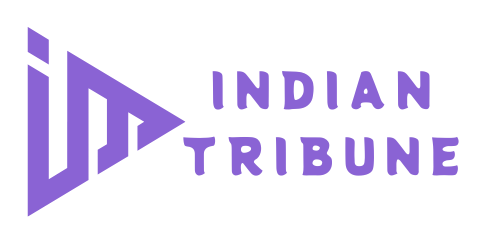The emergence of AI art generation marks a pivotal shift in the art world, bridging technology and creativity in unprecedented ways. Artists and technologists are leveraging sophisticated algorithms and machine learning techniques to create captivating artworks that challenge traditional notions of creativity. These innovations enable both established and emerging artists to explore new styles and techniques, enhancing their creative processes and expanding their artistic capabilities.
Moreover, AI-generated art raises essential questions about authorship, originality, and the role of human creativity in the artistic landscape. As AI becomes an integral part of the art-making process, it invites artists to collaborate with machines, leading to the emergence of new artistic genres. This collaboration not only democratizes art creation but also opens avenues for unique forms of expression that were previously unimaginable. The implications of AI in art generation extend beyond mere aesthetics, prompting discussions on the future of art as a whole and its evolving relationship with technology.
The Evolution of Art and Technology
From the invention of the printing press to the advent of photography, each new medium has transformed the way art is created, perceived, and consumed. Today, we find ourselves at another crossroads with the rise of artificial intelligence (AI) in the creative process. Also, AI art generation is not just a novelty; it signifies a profound shift in artistic practice that poses new opportunities and challenges for artists, critics, and audiences alike.
Understanding AI Art Generation
AI art generation involves using algorithms and machine learning to create visual content. This technology can analyze vast datasets of existing artworks, learning from styles, techniques, and themes. Through processes like neural networks, AI can generate images that mimic specific artists or movements or create entirely new forms of art that challenge traditional aesthetics.
Prominent AI art tools, such as DeepArt, DALL-E, and Midjourney, allow users to input prompts that guide the generation process. For example, an artist may enter a phrase like “a serene landscape at sunset,” and the AI will produce a unique artwork based on its training data. These systems enable rapid experimentation and iteration, making art creation more accessible to a broader audience, regardless of their technical skills.
The Role of Collaboration Between Artists and AI
One of the most intriguing aspects of AI art generation is the potential for collaboration between human artists and machines. Rather than replacing artists, AI tools can enhance their creative processes. Artists can leverage AI to explore new styles, compositions, and color palettes, using the generated content as a springboard for their work.
Consider the case of artist Refik Anadol, who combines data and AI to create immersive installations. His work transforms public data into visually stunning art that engages audiences in unique ways. By collaborating with AI, Anadol pushes the boundaries of what art can be, redefining the role of the artist as a curator and interpreter of machine-generated content.
This collaborative approach enables artists to step outside their comfort zones, experimenting with concepts and ideas they may not have considered otherwise. The dialogue between human creativity and machine intelligence can lead to innovative forms of expression that blend the best of both worlds.
AI Art Generation and Democratization of Creativity
One of the most significant impacts of AI art generation is its democratizing effect on creativity. Traditional art forms often require years of training, access to expensive materials, and extensive knowledge of techniques. In contrast, AI tools enable individuals with little to no artistic background to create compelling works of art.
Platforms like Artbreeder allow users to blend images and manipulate parameters to generate unique artworks collaboratively. This accessibility has the potential to inspire a new generation of creators, encouraging diverse voices and perspectives in the art world. As more people engage with AI tools, we can expect an explosion of creativity that reflects a wider range of cultural experiences and ideas.
Additionally, AI art generation can be particularly beneficial in educational settings. Art educators can introduce students to AI tools as a means of enhancing their creative practices, fostering experimentation and collaboration. By integrating AI into the curriculum, students can learn to harness technology as a tool for artistic expression, preparing them for a future where art and technology are increasingly intertwined.
The Aesthetics of AI-Generated Art
As AI-generated art gains prominence, it prompts questions about aesthetics and taste. What defines beauty in art created by machines? Can an AI-generated piece evoke the same emotional response as a work created by a human artist? Critics and art enthusiasts are grappling with these questions as they navigate the evolving landscape of AI art.
AI art often possesses a distinct aesthetic characterized by unexpected patterns, surreal imagery, and unique interpretations of familiar subjects. This originality can challenge viewers’ perceptions of what art should be, inviting them to engage with works that defy conventional norms. As a result, AI-generated art may expand the boundaries of artistic expression, allowing for new interpretations and experiences.
However, the rise of AI-generated art also raises concerns about the commodification of creativity. As AI tools become more prevalent, there is a risk that the market may prioritize novelty and algorithmically generated works over the depth of human experience. This potential shift in values prompts ongoing discussions about the role of emotion, intention, and context in defining art’s worth.
The Ethical Implications of AI Art Generation
The integration of AI into the creative process brings forth ethical considerations that warrant examination. One primary concern revolves around authorship and intellectual property. If an AI generates a piece of art, who owns the rights to that work? Is it the programmer who created the AI, the user who inputted the parameters, or the AI itself?
These questions are further complicated by the fact that AI art generation relies heavily on existing works for training data. Many AI models are trained on vast datasets that include artworks from countless artists, raising concerns about appropriation and copyright infringement. Artists may find their styles mimicked or their works reproduced without consent, leading to a potential loss of income and recognition.
To address these issues, the art community must engage in discussions about ethical practices in AI art generation. Establishing clear guidelines around authorship, copyright, and fair use will be crucial as the technology continues to evolve. Furthermore, it is essential to acknowledge and respect the contributions of human artists, ensuring that their work is valued and protected in a rapidly changing landscape.
The Future of Art Curation and AI
As AI art generation continues to evolve, its impact on art curation and exhibition practices will become increasingly pronounced. Curators are exploring how to incorporate AI-generated art into traditional gallery spaces, creating dynamic exhibitions that highlight the intersection of technology and creativity.
AI can assist curators in analyzing audience preferences, predicting trends, and optimizing exhibition layouts. By leveraging data analytics, curators can create more engaging experiences for visitors, tailoring exhibitions to reflect current interests and tastes. Furthermore, this integration of AI into the curation process offers exciting possibilities for enhancing audience engagement and expanding the reach of contemporary art.
Additionally, AI-generated art raises questions about the future of art criticism. Critics will need to adapt their methodologies to evaluate and interpret AI art, considering the unique qualities and context of machine-generated works. This evolution may lead to new critical frameworks that embrace collaboration between human artists and AI, fostering a deeper understanding of the creative process.
AI Art Generation in Commercial Industries
The impact of AI art generation extends beyond the fine arts into various commercial industries. In advertising, marketing, and design, companies are increasingly leveraging AI tools to create visually appealing content quickly and efficiently. Moreover, AI can analyze consumer preferences and generate tailored designs, enabling brands to connect with their audiences in innovative ways.
Moreover, the gaming industry has embraced AI-generated art for character design, environment creation, and storytelling. Game developers utilize AI tools to produce assets that enhance gameplay experiences, resulting in immersive worlds that captivate players. This synergy between AI and game design not only streamlines production processes but also allows for greater creativity in the development of virtual experiences.
Further, as AI continues to advance, its role in commercial art will likely expand, leading to new opportunities for collaboration between artists and businesses. Creative professionals may find themselves working alongside AI systems to produce content that resonates with diverse audiences, blurring the lines between artistic expression and commercial viability.
AI Art Generation and Cultural Representation
AI art generation has the potential to impact cultural representation in significant ways. By democratizing art creation, it can amplify underrepresented voices and perspectives that have historically been marginalized in the art world. As more individuals engage with AI tools, we can anticipate a broader range of cultural narratives being expressed through visual art.
However, the datasets used to train AI models must be carefully curated to ensure diverse representation. If AI systems are trained on biased data, they may reproduce existing inequalities in artistic representation. Furthermore, it is essential for developers and artists to work collaboratively to ensure that AI-generated art reflects a rich tapestry of cultural experiences.
Additionally, the intersection of AI and cultural heritage raises questions about authenticity and preservation. As AI tools can mimic traditional styles and techniques, there is a risk that they may overshadow the value of authentic cultural expressions. Engaging in conversations about the role of AI in cultural representation will be vital in fostering a respectful and inclusive art community.
The Global Impact of AI Art Generation
The impact of AI art generation is not confined to a single region or culture; it has the potential to influence global artistic practices. As access to AI tools becomes more widespread, artists from diverse backgrounds can engage with technology in ways that reflect their unique cultural contexts.
However, global collaborations may emerge, with artists using AI to bridge geographical and cultural divides. This interconnectedness can lead to a fusion of styles and ideas, creating a vibrant global art scene that celebrates diversity while fostering innovation.
Furthermore, AI-generated art can serve as a platform for addressing pressing social issues. Artists may use AI tools to create works that comment on climate change, social justice, and human rights, sparking conversations that transcend borders. By harnessing the power of AI, artists can amplify their messages and connect with audiences on a global scale.
Conclusion
In conclusion, the integration of AI art generation into the artistic landscape signifies a transformative shift that will undoubtedly shape the future of art. As artists continue to explore the possibilities offered by AI, the boundaries of creativity will expand, leading to new forms of expression that challenge traditional notions of art.
However, with this transformation comes the need for critical engagement with ethical considerations, authorship, and cultural representation. As we navigate this new frontier, artists, technologists, and audiences must collaborate to ensure that the evolution of art remains inclusive, diverse, and reflective of the rich tapestry of human experience.
As AI continues to evolve, it will be crucial to celebrate the unique contributions of human artists while embracing the opportunities presented by technology. The future of art lies in the synergy between human creativity and machine intelligence, fostering a vibrant and dynamic artistic landscape that inspires and engages audiences for generations to come.




